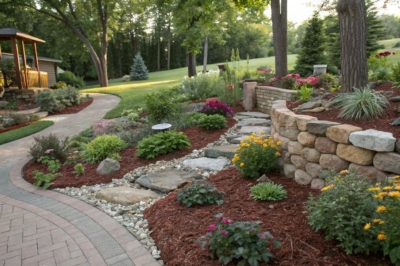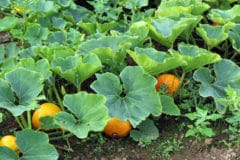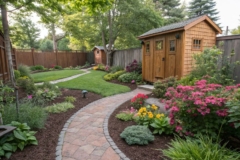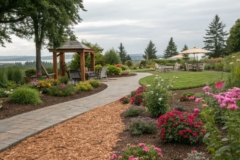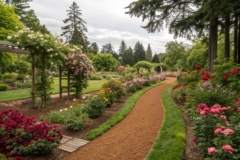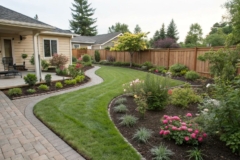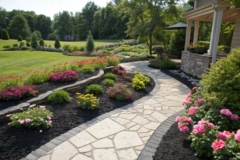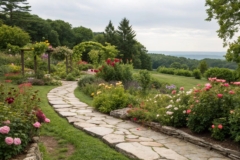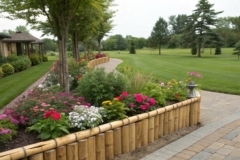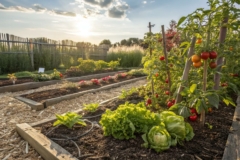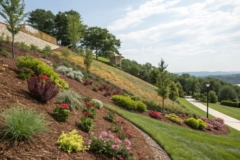1. Trench Edging
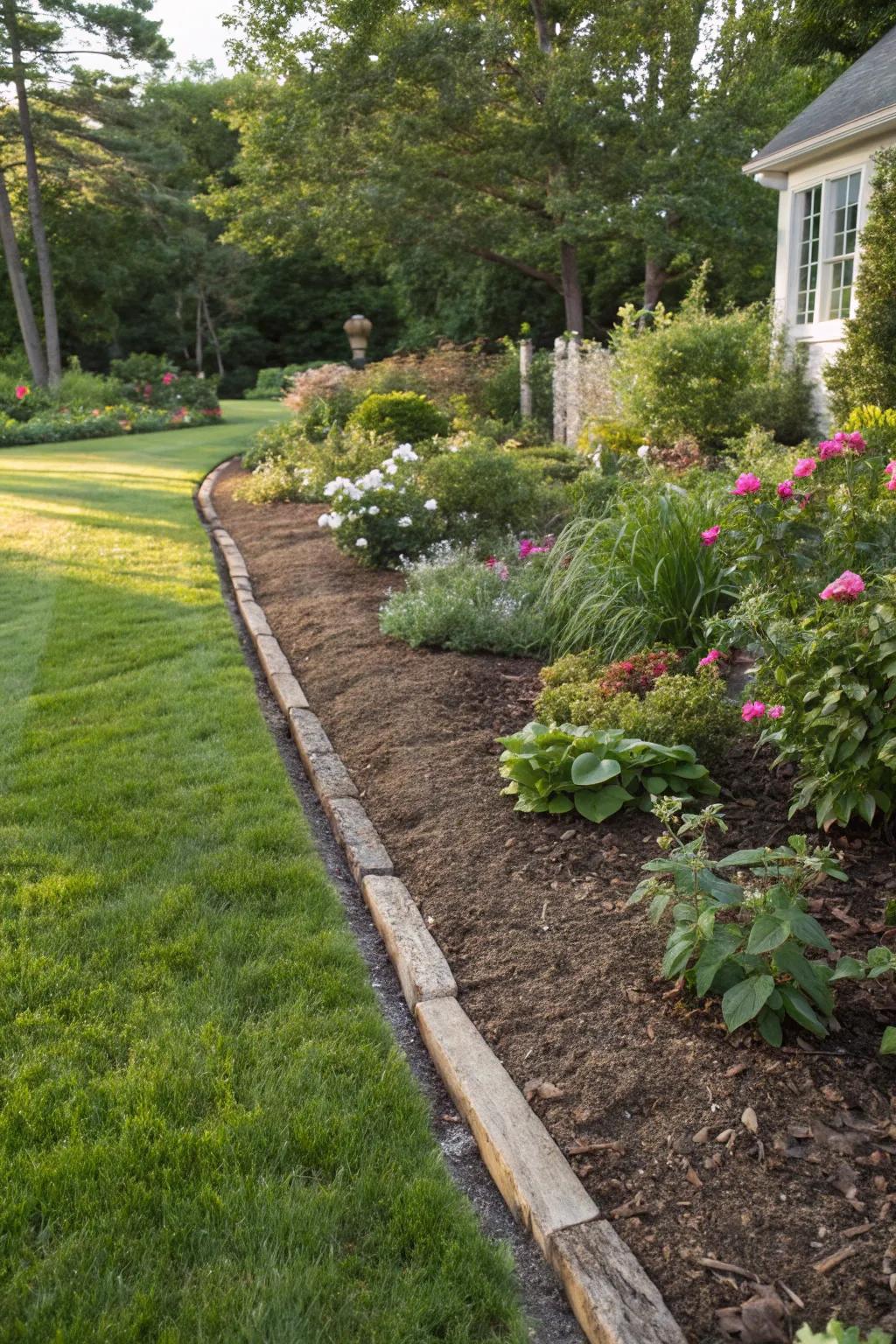
A simple trench can be a surprisingly effective mulch barrier. I’ve used this method for a minimalist look that focuses on clean lines.
Give these a look:
- Garden Spade: Use a garden spade to create crisp, clean trench edges for a professional garden look.
- Edging Shovel: Easily form precise trenches with an edging shovel, enhancing your garden’s aesthetic appeal.
- Soil Rake: Level your trench and prepare soil efficiently with a sturdy soil rake for better mulch application.
2. Living Plant Borders
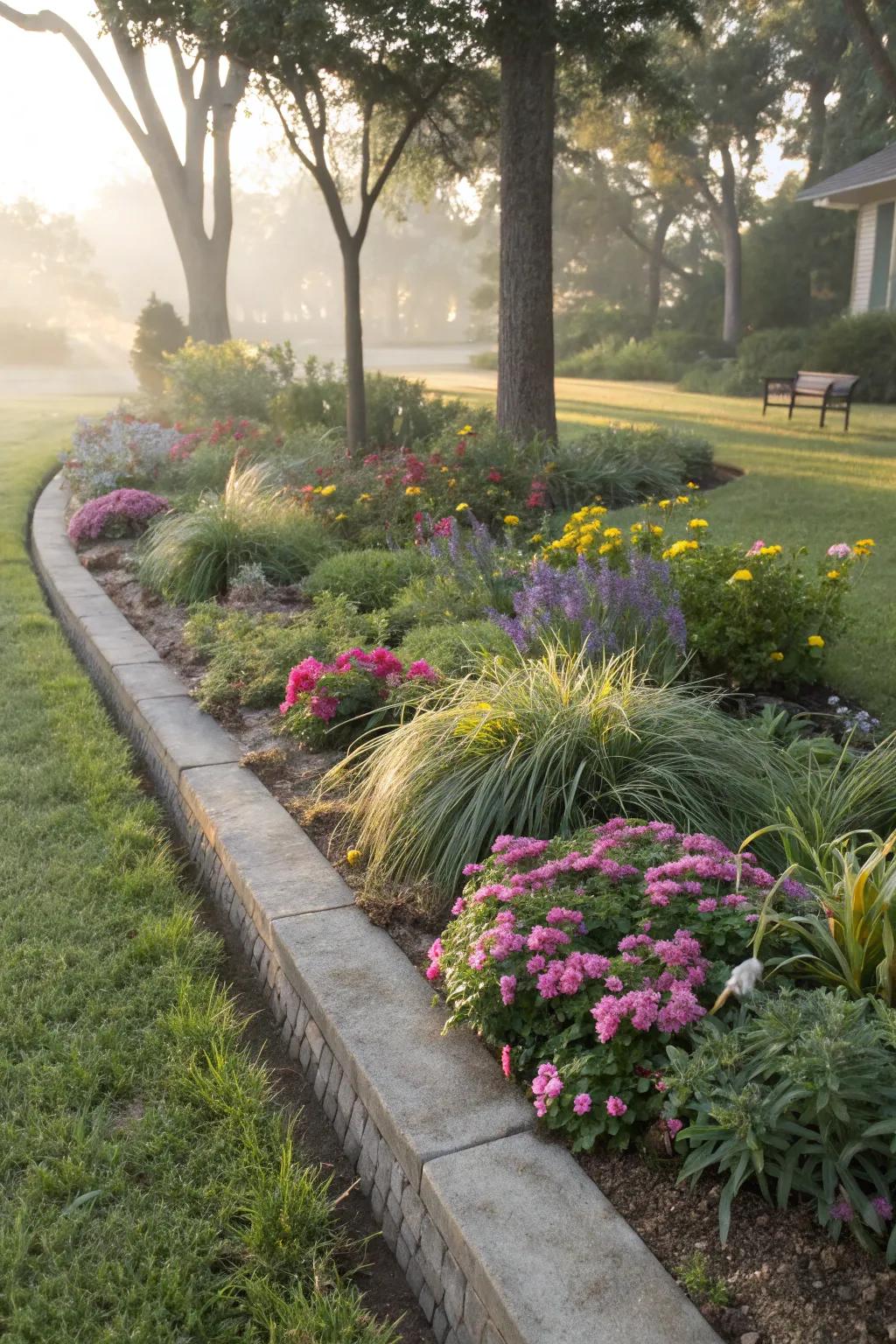
Low-growing plants like Mondo grass can act as a living barrier, adding lush greenery while keeping mulch in place. I’ve used them to create a flowing, natural edge in my garden.
Items that may come in handy:
- Mondo Grass Seeds or Plants: Transform your garden edge with lush Mondo grass for a sleek, natural border today.
- Garden Edging Stone Border: Enhance your garden’s aesthetic with durable stone edging for a neat and tidy border.
- Mulch Mat Weed Barrier: Protect your mulch and minimize weeds with this effective, easy-to-install mulch mat barrier.
3. Edible Plant Borders

Why not make your mulch borders delicious with herbs or low-growing vegetables? I love snipping fresh basil right from the edge of my garden beds.
Try these:
- Herb Garden Starter Kit: Cultivate a variety of flavorful herbs at home. Perfect for adding fresh taste to meals.
- Vegetable Seed Packets: Plant and grow your own vegetables in your garden for a delicious and fresh supply.
- Garden Border Edging: Enhance your garden’s appearance with durable and aesthetic border edging for tidy plant separation.
4. Classic Brick Edging
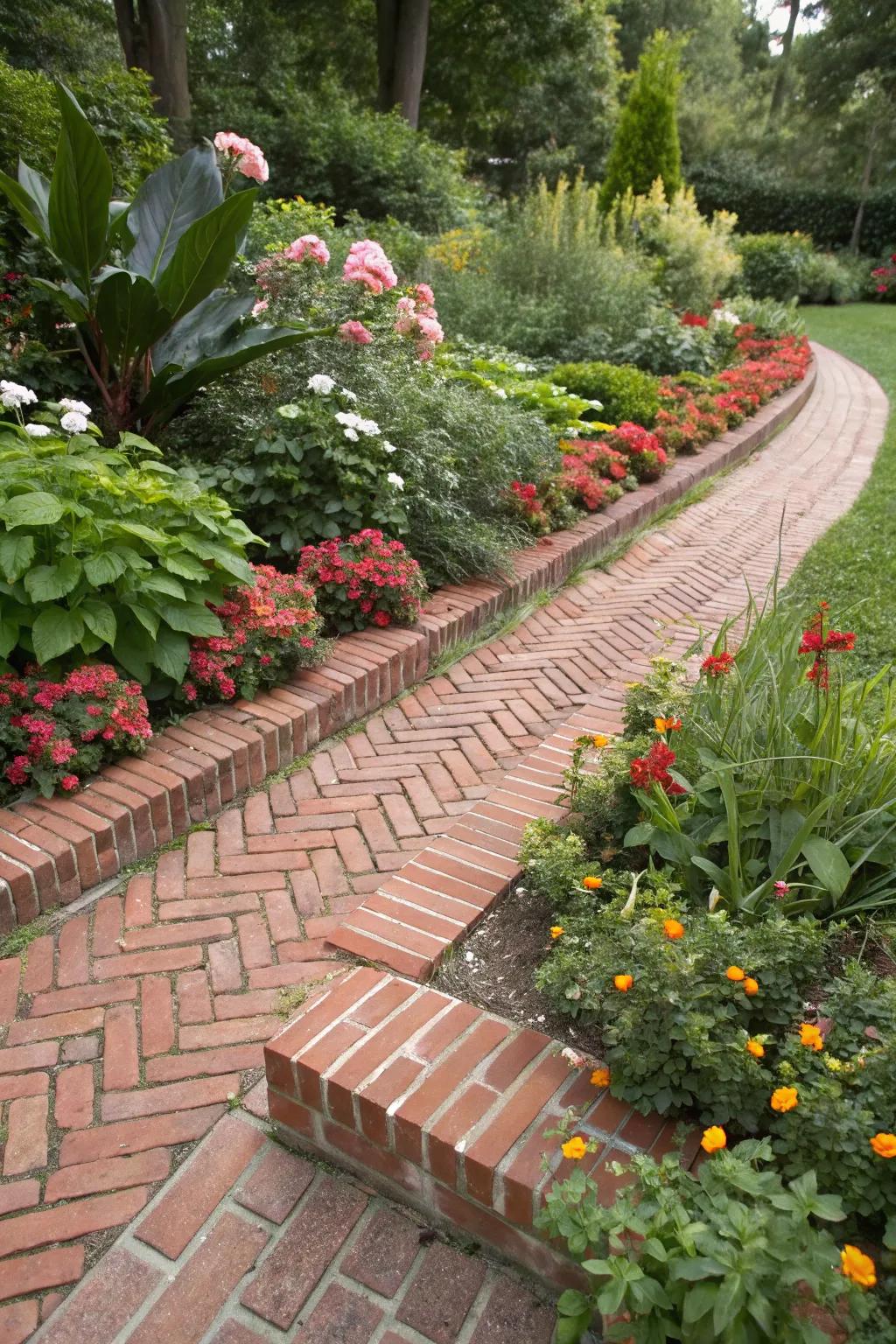
Bricks offer a timeless way to edge your garden. I’ve found that mixing different shades creates a charming mosaic that complements my vibrant flower beds.
You might like:
- Clay Bricks for Landscaping: Enhance your garden with durable clay bricks, perfect for timeless and elegant edging designs.
- Edging Shovel for Landscaping: Easily prepare ground for brick edging with this sturdy and precise edging shovel.
- Garden Design Inspiration Book: Explore ideas for beautiful edging with a garden design inspiration book tailored for creativity.
5. Bamboo Borders
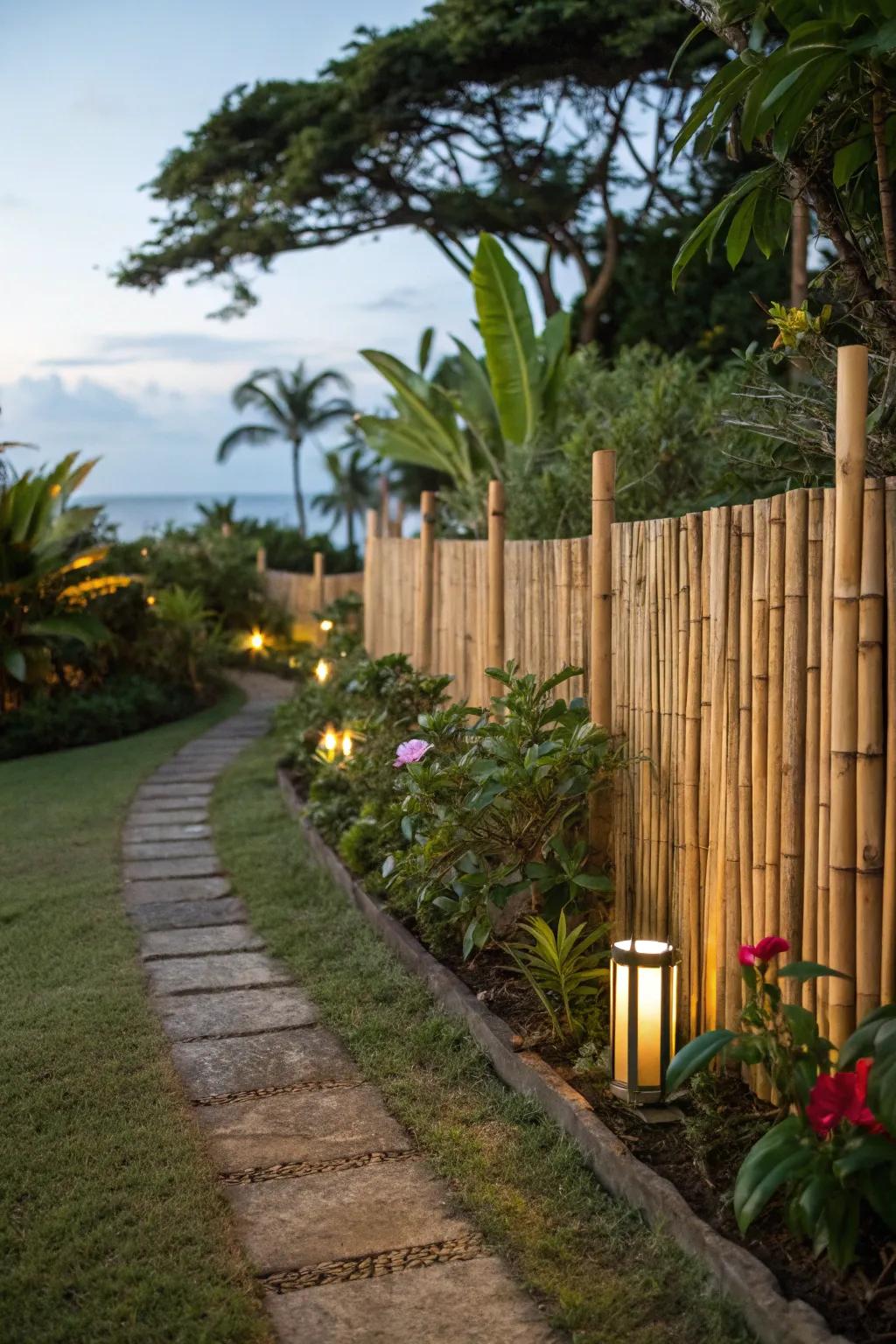
Bamboo stakes can be a stylish and sustainable way to edge your garden. I love the natural look they bring, especially when paired with tropical plants.
Maybe worth checking out:
- Bamboo Garden Edging Roll: Enhance your garden’s edges with natural bamboo, offering a stylish and eco-friendly border solution.
- Bamboo Stakes Set: Create a sustainable border with versatile bamboo stakes, perfect for supporting plants and edging.
- Decorative Bamboo Fencing: Improve garden privacy and aesthetics with decorative bamboo fencing, blending seamlessly with nature.
6. Decorative Rock Edging
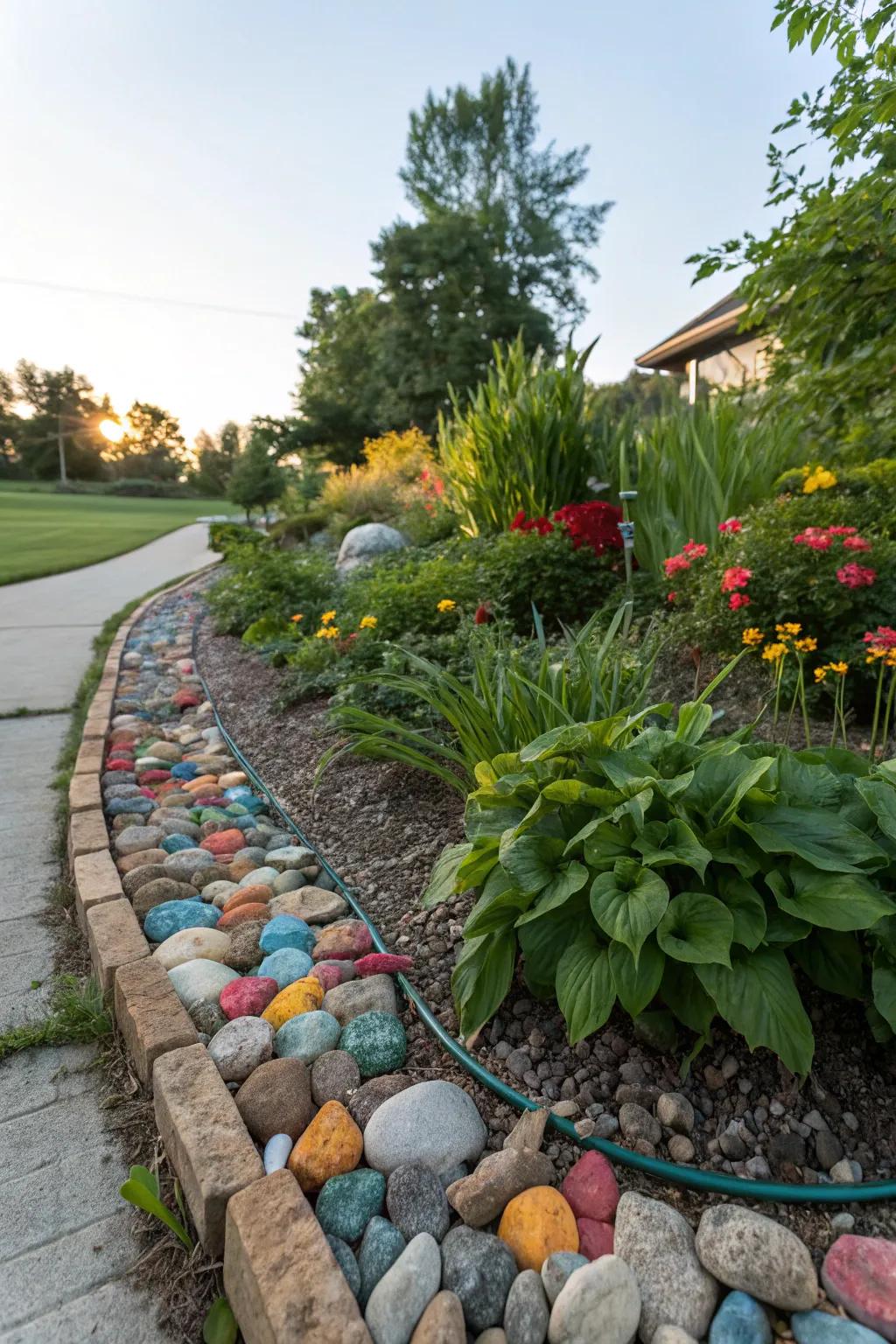
For a pop of color, try using decorative rocks like lava stones. I’ve found they add visual interest and texture to my mulch beds.
A few choices to try:
- Colored Lava Stones: Add vibrant texture to your garden with these versatile colored lava stones.
- Garden Decorative Pebbles: Enhance your mulch beds with multicolored decorative pebbles for a stunning garden feature.
- Mixed River Rocks: Use mixed river rocks to bring natural beauty and color variety to your mulch barrier.
7. Plastic or Composite Edging

Plastic or composite edging is perfect for budget-friendly, flexible borders. In my garden, they provide a quick and easy solution to keep mulch neat.
Some ideas to consider:
- Flexible Plastic Landscape Edging: Enhance your garden’s appeal with versatile, easy-install edging that keeps mulch tidy and contained.
- Composite Garden Edging Kit: Create clean lines in your garden with durable edging that withstands weather and resists damage.
- Roll-Out Garden Edging: Quickly lay out a tidy garden edge with roll-out edging, perfect for defined landscape borders.
8. Metal Edging for a Modern Twist
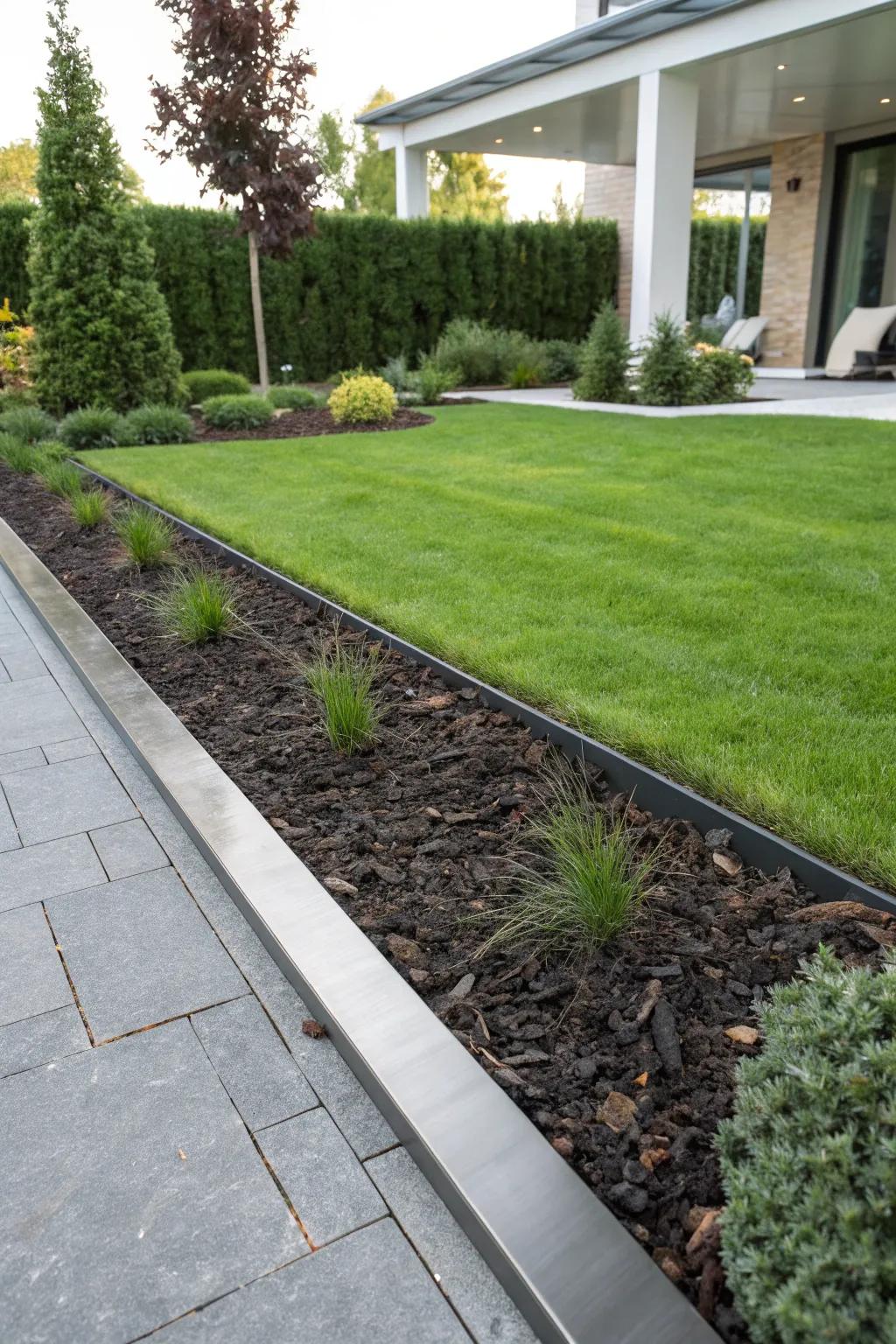
For a sleek, contemporary feel, metal edging is my go-to. It offers a crisp line that contrasts beautifully with soft plants and mulch.
May just do the trick:
- Stainless Steel Garden Edging: Enhance your garden with sleek stainless steel edging, perfect for a modern landscape design.
- Aluminum Landscape Edging Kit: Create clean, durable lines in your garden with this easy-to-install aluminum edging kit.
- Metal Lawn Border Edge: Add sophistication to your yard with a durable metal lawn border that defines spaces beautifully.
9. Hollowed Log Edging
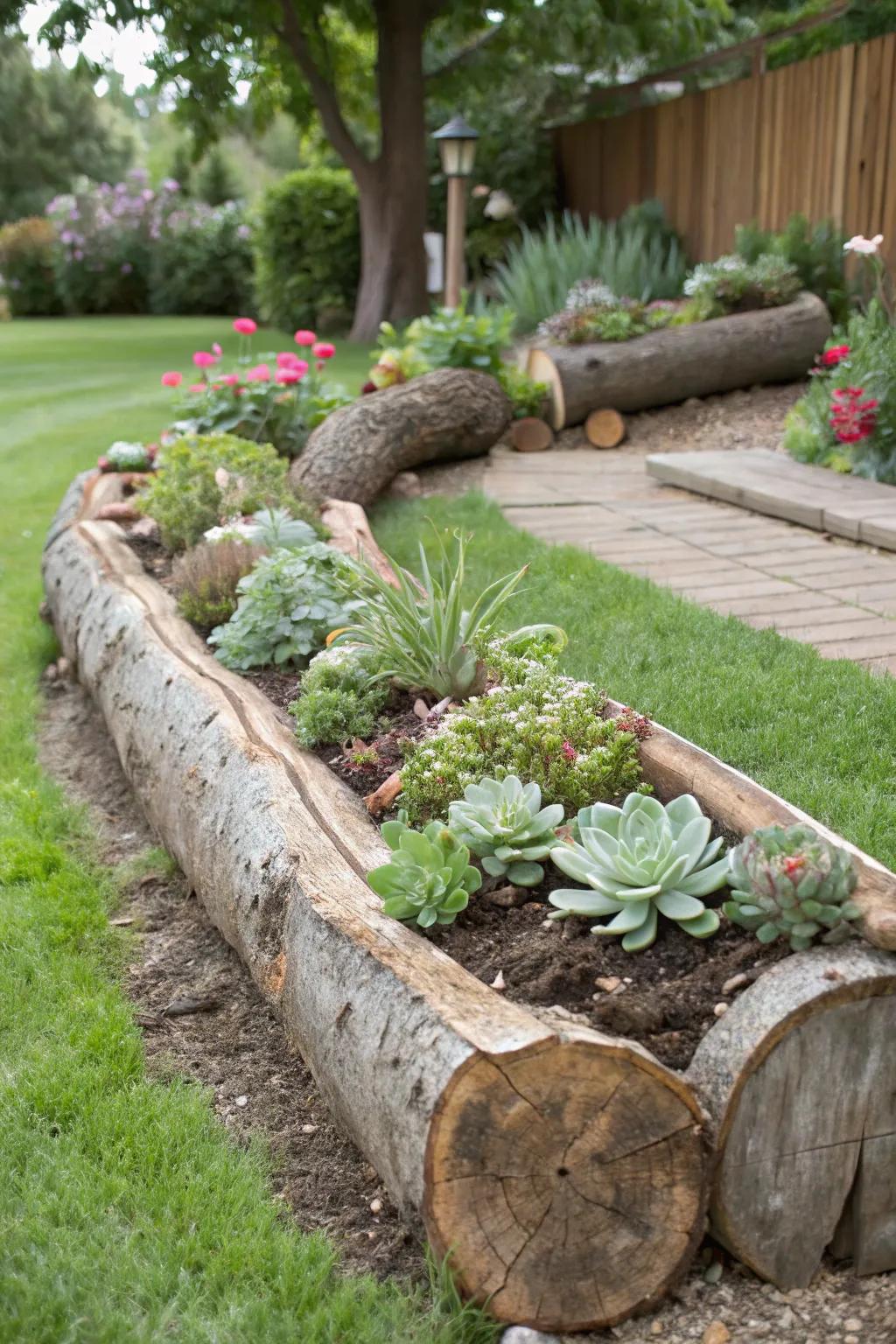
Hollowed logs can create an intriguing border, doubling as planters. I’ve used them to grow succulents, adding a whimsical touch to my garden.
Useful items to consider:
- Natural Wood Planters: Enhance your garden with rustic charm using these versatile natural wood planters today.
- Succulent Soil Mix: Boost succulent growth effectively by choosing this nutrient-rich succulent soil mix now.
- Garden Hand Trowel: Make planting simple and precise with a durable garden hand trowel today.
10. Repurposed Materials
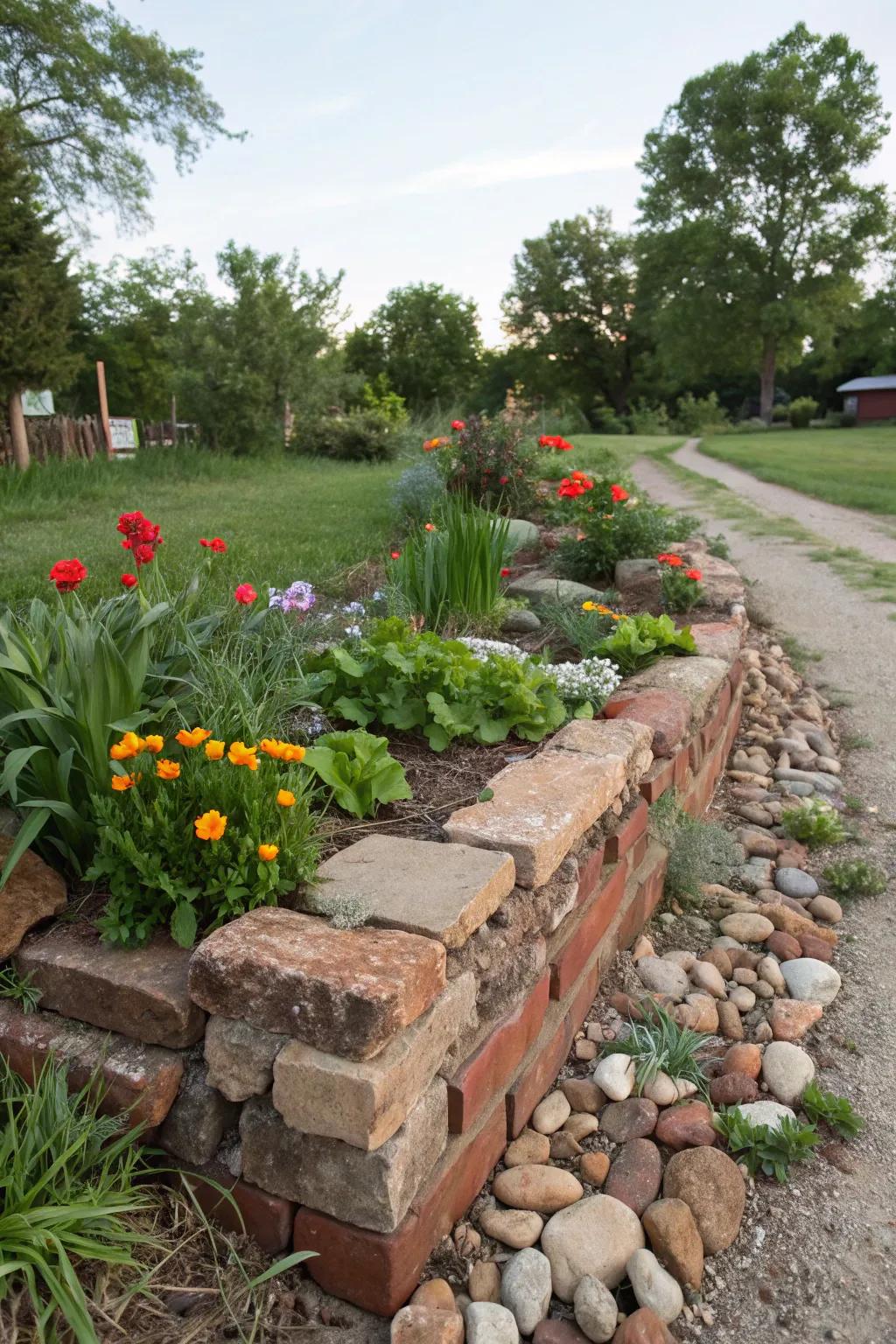
Get creative by using reclaimed materials like old bricks or stones. In my backyard, these add a unique character while being eco-friendly.
Products that could assist:
- Reclaimed Brick Pavers: Transform your garden with eco-friendly charm using versatile reclaimed brick pavers.
- Natural Stone Edging: Enhance garden boundaries elegantly with durable natural stone edging for a rustic touch.
- Garden Pebble Pack: Accentuate pathways creatively with vibrant, smooth garden pebbles for added texture.
11. Wooden Log Borders
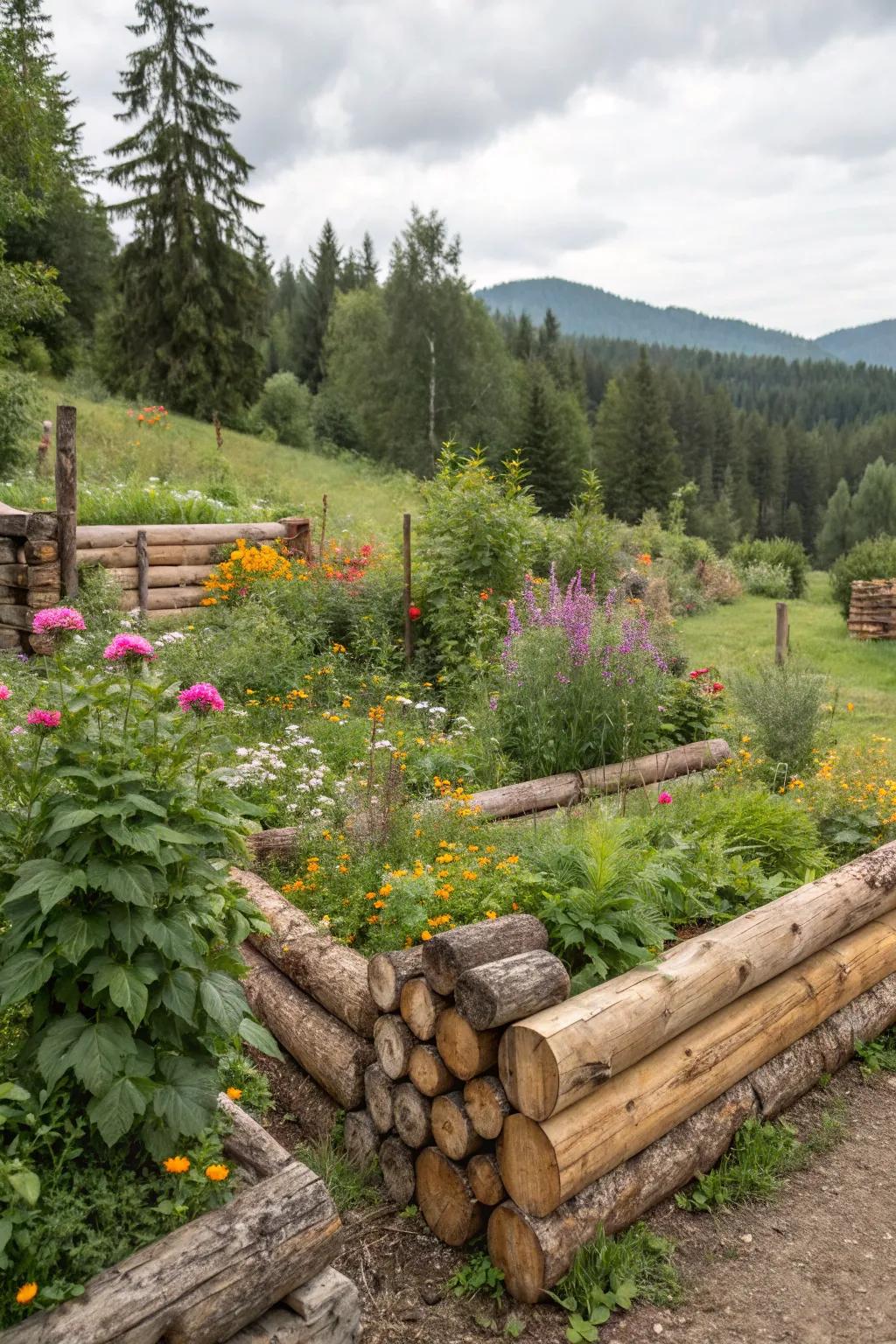
Repurpose fallen logs or branches for a rustic border that feels right at home in a woodland garden. In my experience, this creates a cozy, natural aesthetic.
Possibly helpful picks:
- Decorative Wooden Garden Edging: Enhance your garden’s charm with rustic wooden edging, adding a natural touch.
- Log Roll Flexi-Border: Define your garden beds effortlessly with flexible log roll borders for a refined finish.
- Wood Preservative for Outdoor Use: Protect your wooden garden structures with a reliable preservative for lasting durability.
12. Glass Bottle Edging
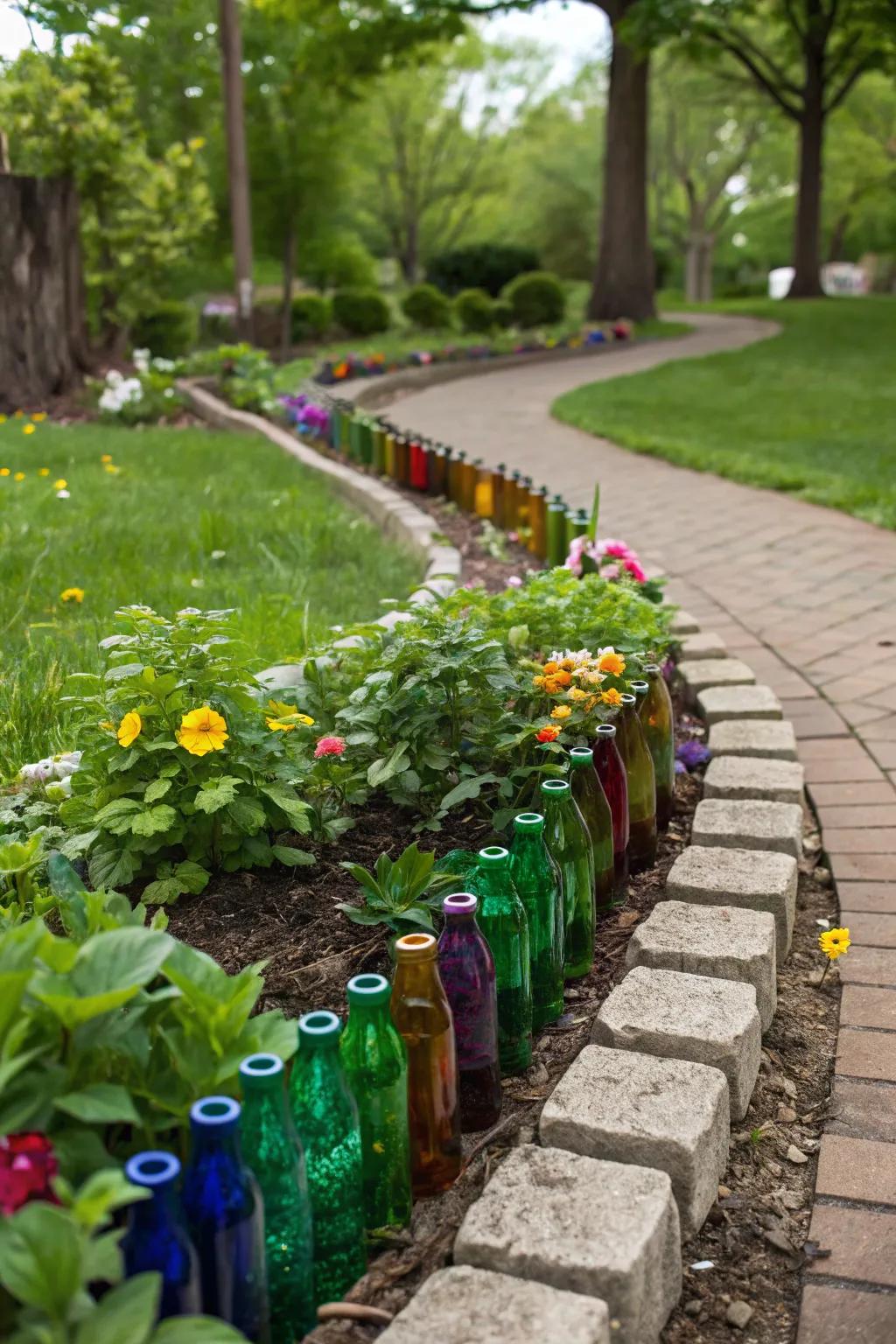
Recycle glass bottles by using them as a colorful border. In my garden, they catch the light beautifully, creating a playful, artistic edge.
Explore these options:
- Glass Bottle Cutter Kit: Easily transform bottles for artistic garden edges. Enhance your garden’s appeal effortlessly.
- Solar Garden Lights: Illuminate your glass bottle edging at night with eco-friendly solar lights. Beautify your garden.
- Garden Border Edging Stakes: Secure your glass bottle edging with durable stakes for a reliable, artistic garden border.
13. Natural Stone Borders

Natural stones bring an earthy elegance to garden edges. In my own garden, I love how the varied textures and colors of stones create a seamless blend with the natural landscape.
Check if these fit your needs:
- Garden Edging Stones: Enhance your garden’s charm with durable stone edging, seamlessly blending with nature.
- Decorative Pebbles: Add texture and color to your garden paths with these versatile decorative pebbles.
- Stone Landscape Wall Kit: Create stunning retaining walls effortlessly with this easy-to-use stone landscape wall kit.
14. Geotextile Fabric Underlay
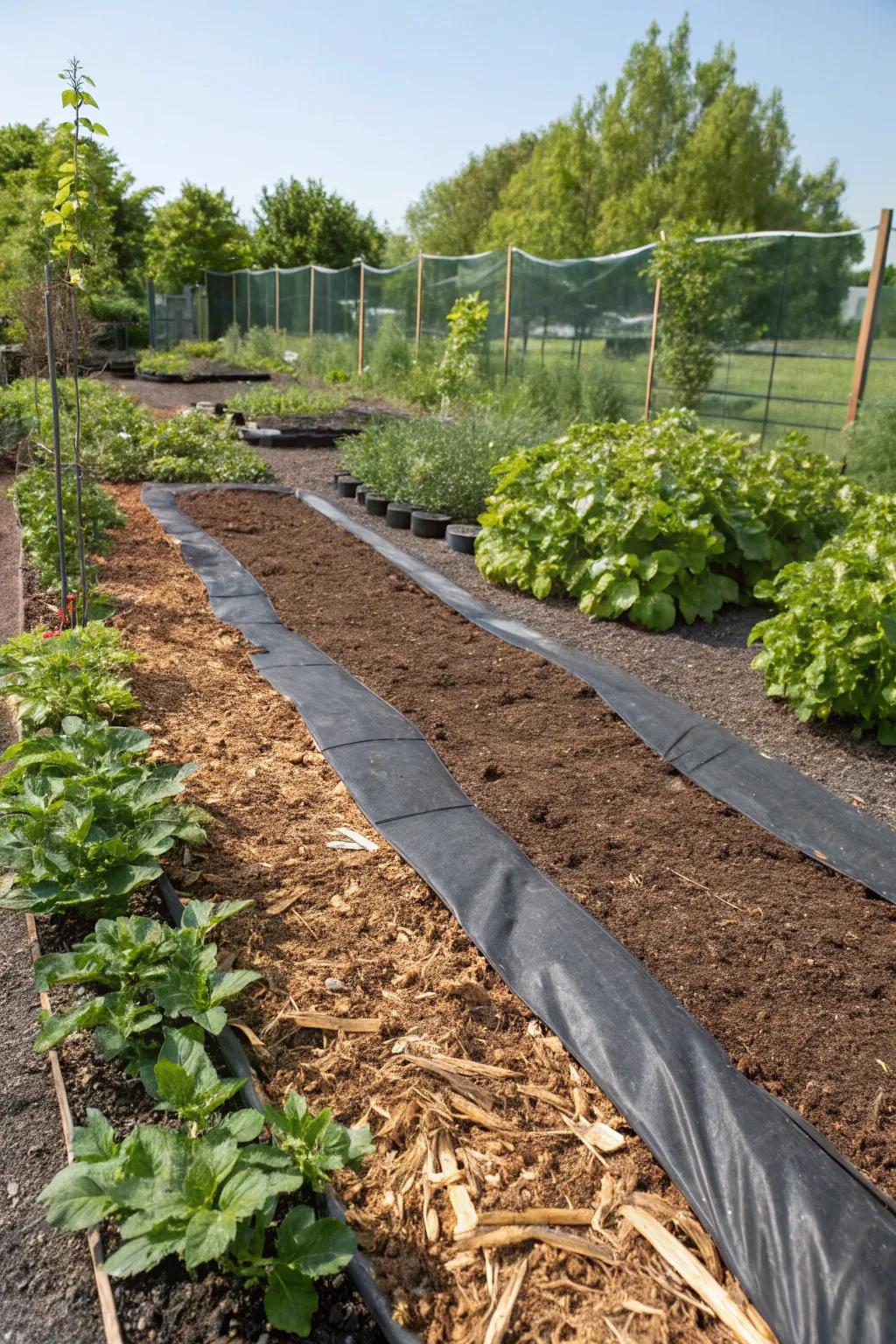
Using geotextile fabric beneath mulch helps maintain neat lines by preventing weed growth. I’ve found it to be a lifesaver for keeping my garden low-maintenance.
A few things you might like:
- Heavy-Duty Geotextile Landscape Fabric: Install this durable fabric to prevent weeds while allowing water and nutrients to reach soil.
- Eco-Friendly Mulch Anchoring Pins: Secure your geotextile fabric with these rust-resistant pins to keep mulch in place effortlessly.
- Biodegradable Mulch Mat: Choose biodegradable mats to support an eco-conscious garden without sacrificing weed prevention.
15. Gravel Pathway Edging
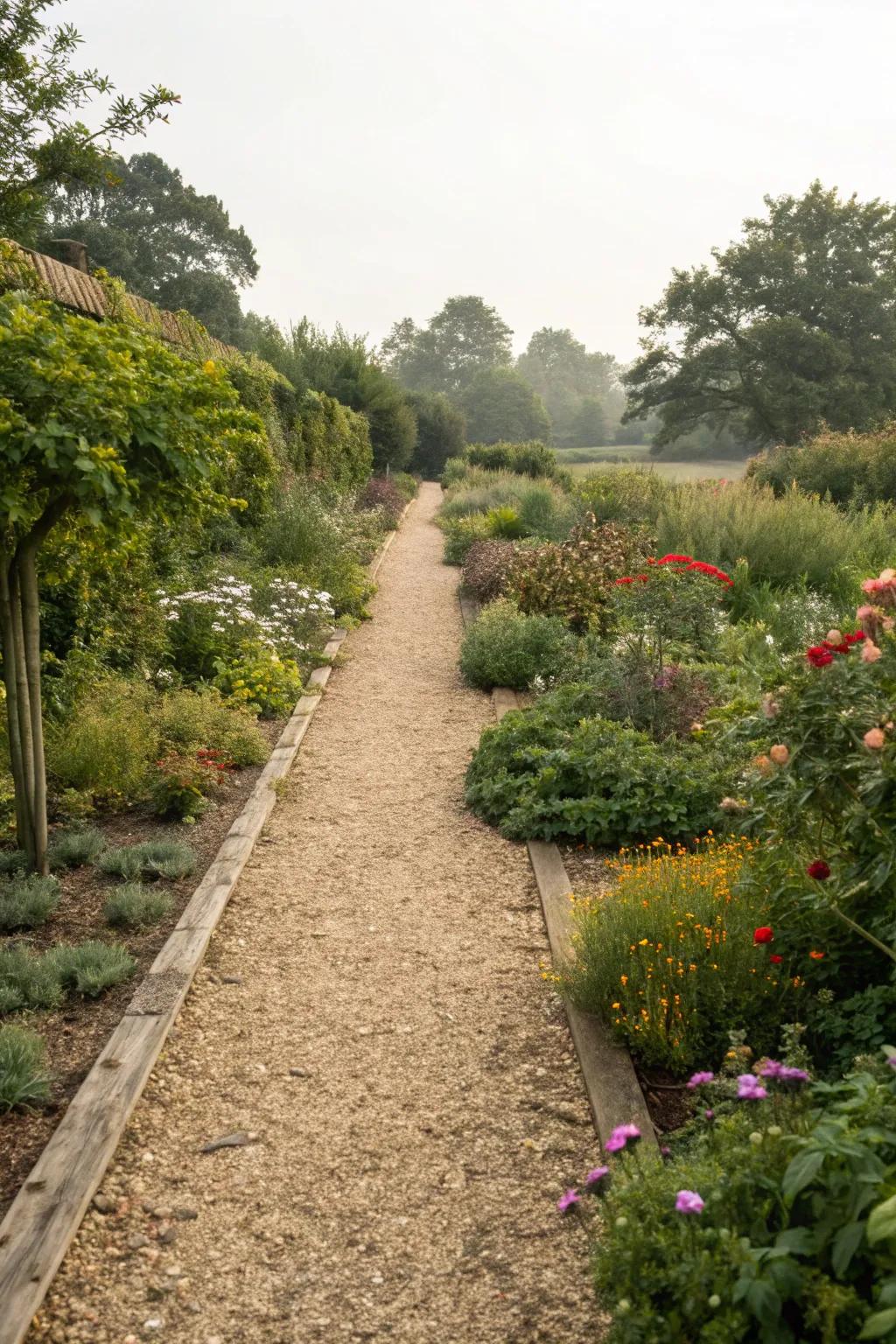
Gravel pathways are not only practical but also serve as wonderful edging for mulch areas. In my garden, they highlight the path while keeping mulch neatly in place.
These products might be useful:
- Garden Wood Border Edging: Define your garden paths with sleek wooden borders, enhancing both aesthetics and function.
- Gravel Stabilization Grids: Ensure your gravel stays in place with these durable and easy-to-install stabilization grids.
- Weather-Resistant Garden Path Lights: Illuminate your garden paths with stylish, weather-resistant lighting for evening ambiances.
16. Concrete Edging
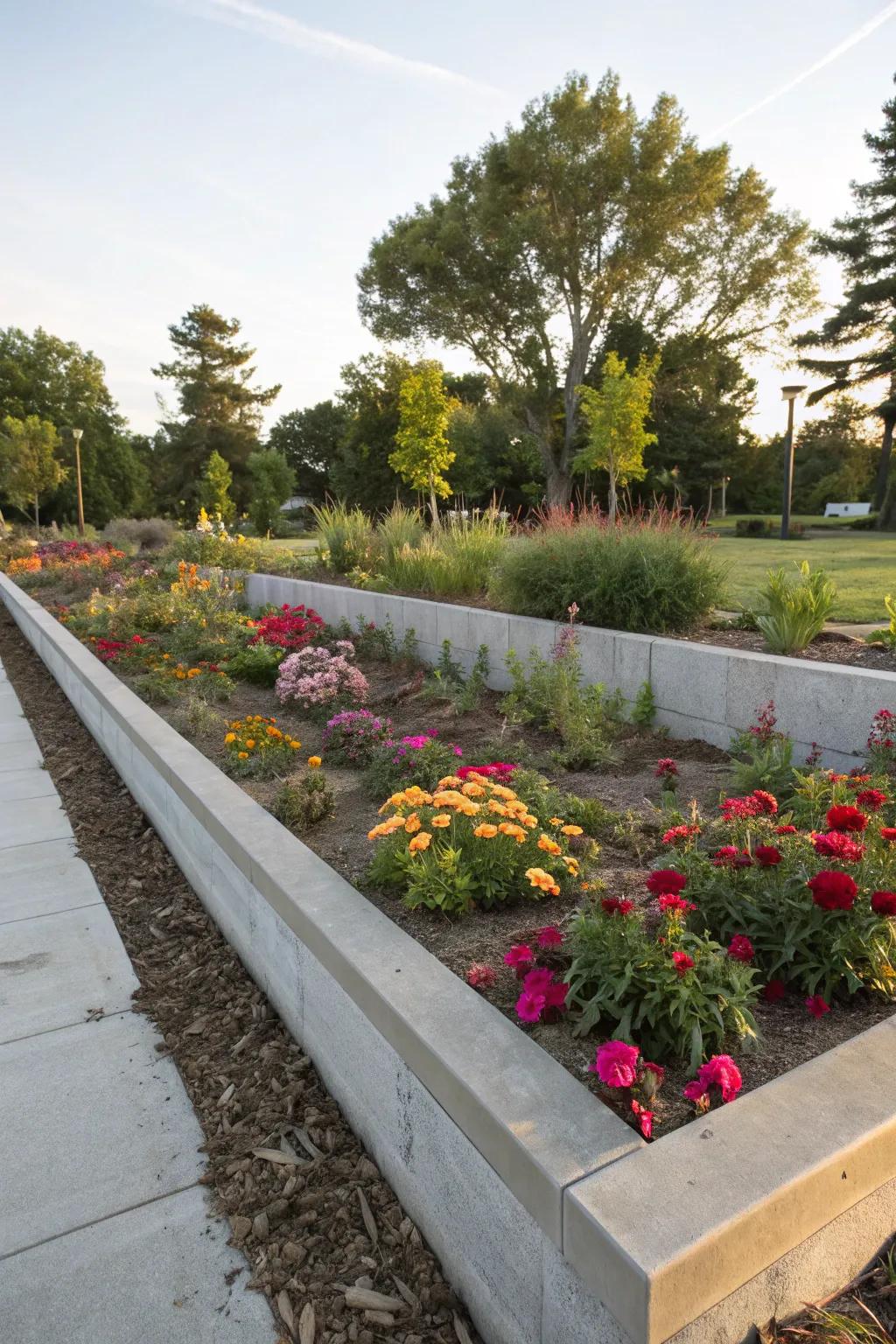
For durability and a clean look, concrete edging is unbeatable. I’ve used it in high-traffic areas to ensure my mulch stays exactly where it should.
A few suggestions:
- Concrete Edging Molds: Create smooth, durable borders effortlessly using reusable concrete edging molds for a polished landscape.
- Garden Rakes for Leveling: Level your soil perfectly before pouring concrete with a sturdy, versatile garden rake.
- Landscape Stakes: Secure your concrete forms in place with durable landscape stakes for precise border installation.
17. Terracotta Pot Edging
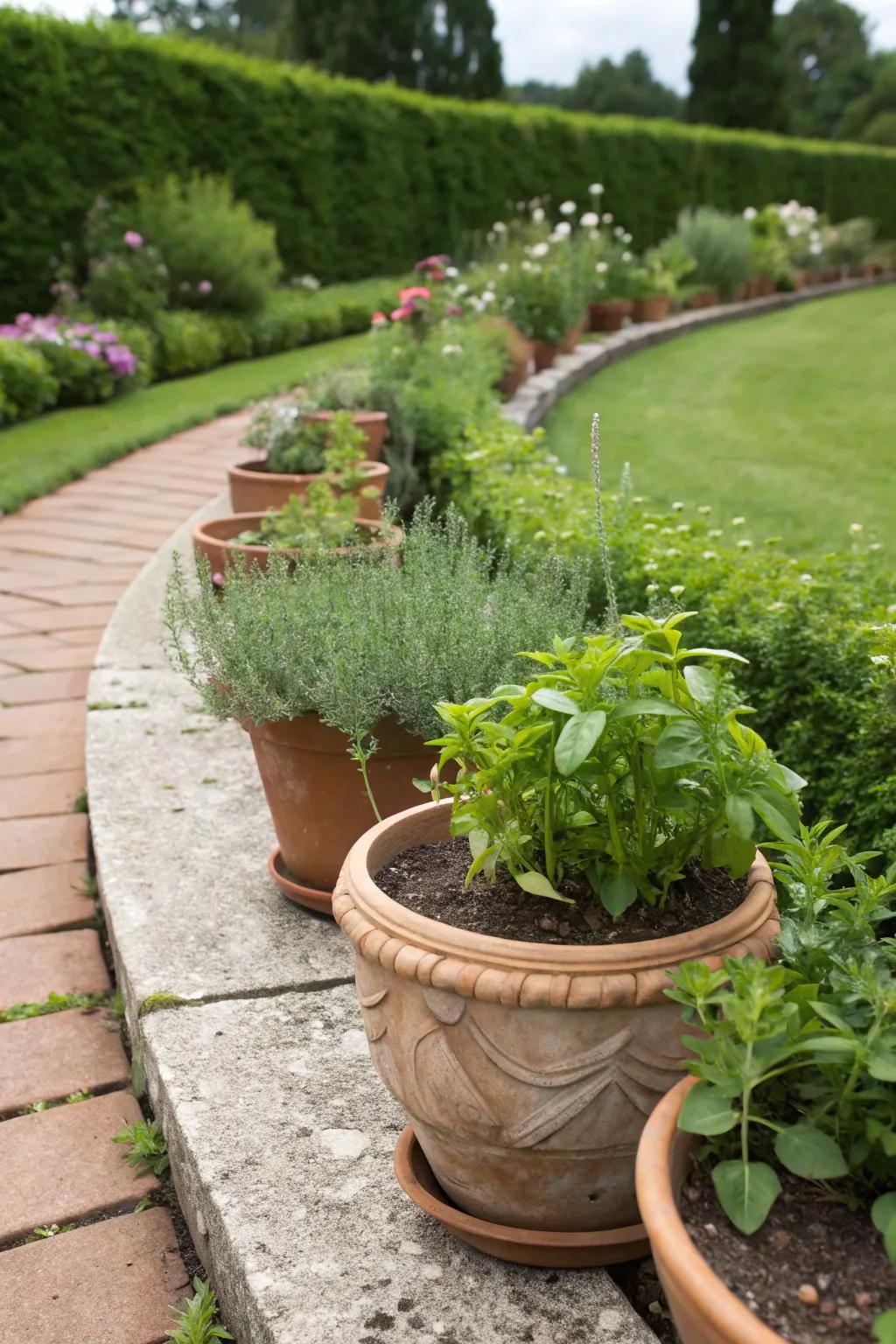
Use terracotta pots laid sideways as a charming garden border. I love the rustic feel they add, plus they’re perfect for small herbs or flowers.
You might give these a try:
- Terracotta Planter Pots: Enhance your garden with charming terracotta pots perfect for herbs or small flowers.
- Herb Seeds Variety Pack: Start a vibrant herb garden with this easy-to-grow seed pack suitable for terracotta pots.
- Potting Soil for Herbs: Ensure healthy growth for your plants with nutrient-rich potting soil ideal for edging projects.
18. Shell or Pebble Borders
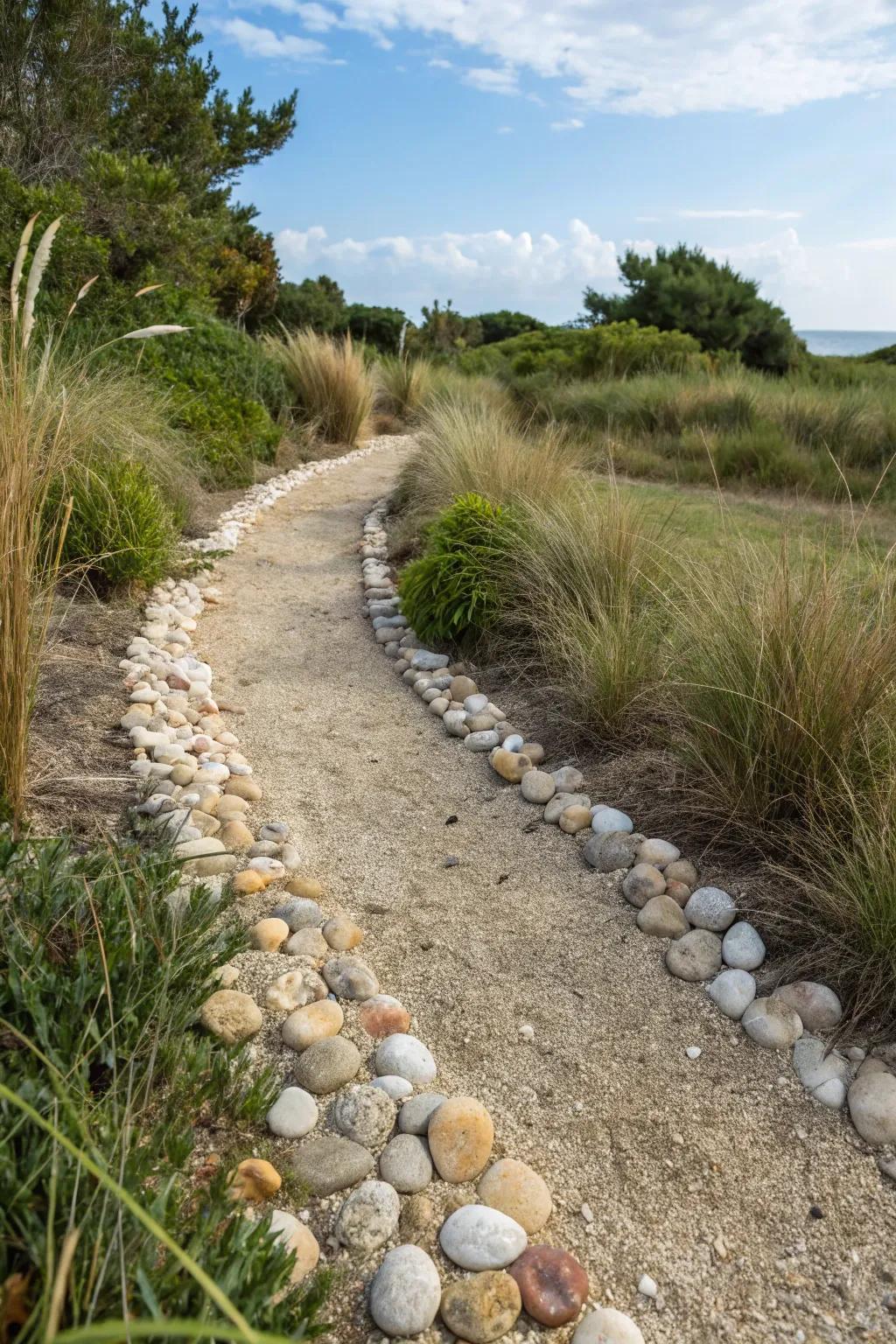
For a beachy vibe, try edging with shells or pebbles. I’ve incorporated these along my pathways for a unique coastal feel.
Consider these options:
- Decorative Beach Pebbles: Enhance your garden’s style with beach-inspired pebbles for a soothing coastal touch.
- Natural Sea Shells: Add coastal charm to your pathway with natural sea shells and create a unique border.
- Garden Pebble Set: Design a beautiful pathway border easily with a versatile set of smooth garden pebbles.
19. Raised Garden Beds
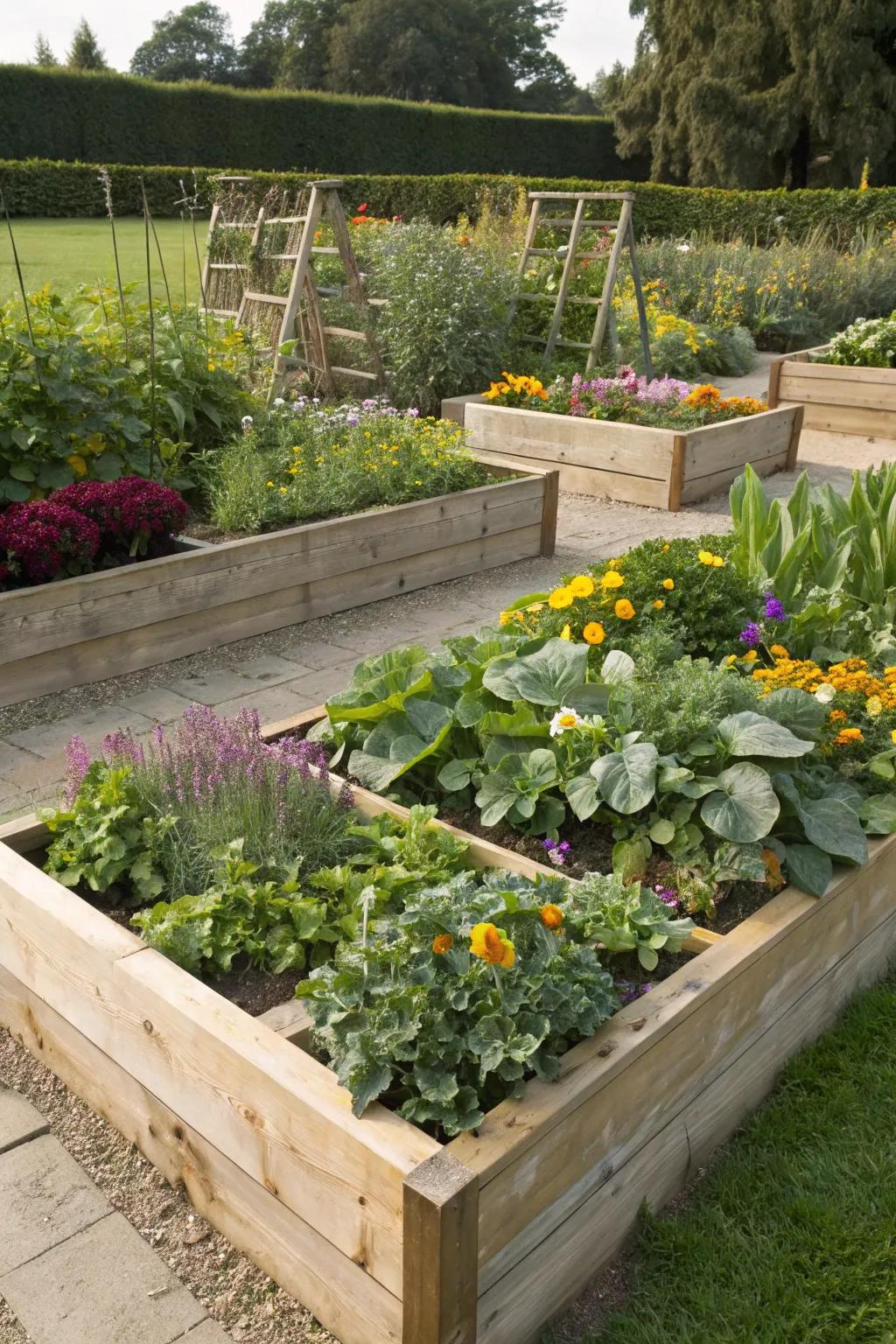
Raised beds don’t just elevate your plants—they’re excellent mulch barriers too. I love how they define spaces while adding height and dimension to my garden.
A few helpful options:
- Wooden Raised Garden Bed Kit: Enhance your garden’s structure with this sturdy, easy-to-assemble wooden raised bed kit.
- Galvanized Metal Raised Garden Bed: Add durability and modern style to your garden with a rust-resistant metal bed.
- Garden Soil Mix for Raised Beds: Boost plant growth with this nutrient-rich soil mix designed for raised bed gardening.
